Flea Beetles
Pest Common Name
- Western Flea Beetle (Epitrix subcrinita)
- Potato Flea Beetle (E. cucumeris)
- Tobacco Flea Beetle (E. hirtipennis)
- Tuber Flea Beetle (E. tuberis)
- Others
- Potato
- Other crops: alfalfa, corn, wheat, canola, others
- Fruits and vegetables: tomato, eggplant, pepper, greens, others
- Brassicas including kale, cauliflower, broccoli and cabbage, may be particularly susceptible
- Weeds: cruciferous weeds including mustards
- Nasturtiums and some other ornamentals
Flea beetles are generally quite small, usually around 1/16-1/8 inch (1.5-3.2 mm) long. Flea beetle adults can vary in appearance, ranging in color from black to grey to brown to blue, and some species are uniform in color while others have stripes or other patterning (Figure 1 and Figure 2). Many species tend to be somewhat metallic and most have large hind legs that allow them to jump when disturbed (giving them their name).
Immature flea beetles (larvae) are small, and have a white or slightly clear body, brown head and worm-like appearance (Figure 3). Larvae are soil-dwelling and pupate in the soil as well. Eggs are laid in the soil near host plants.
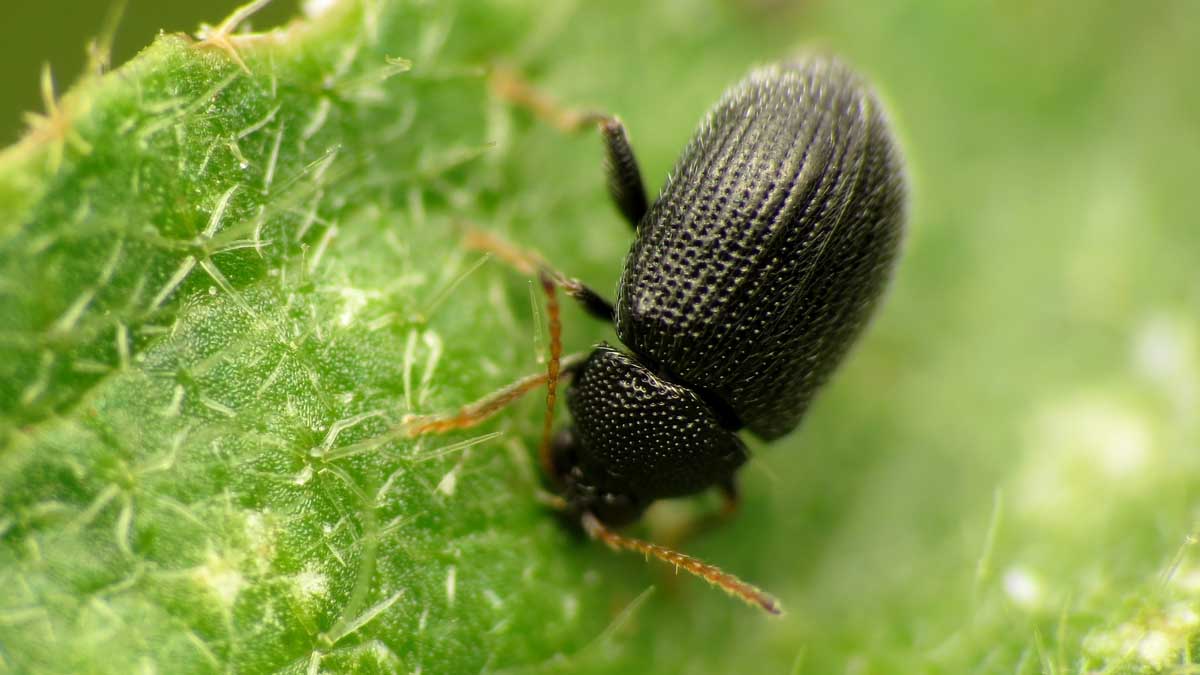
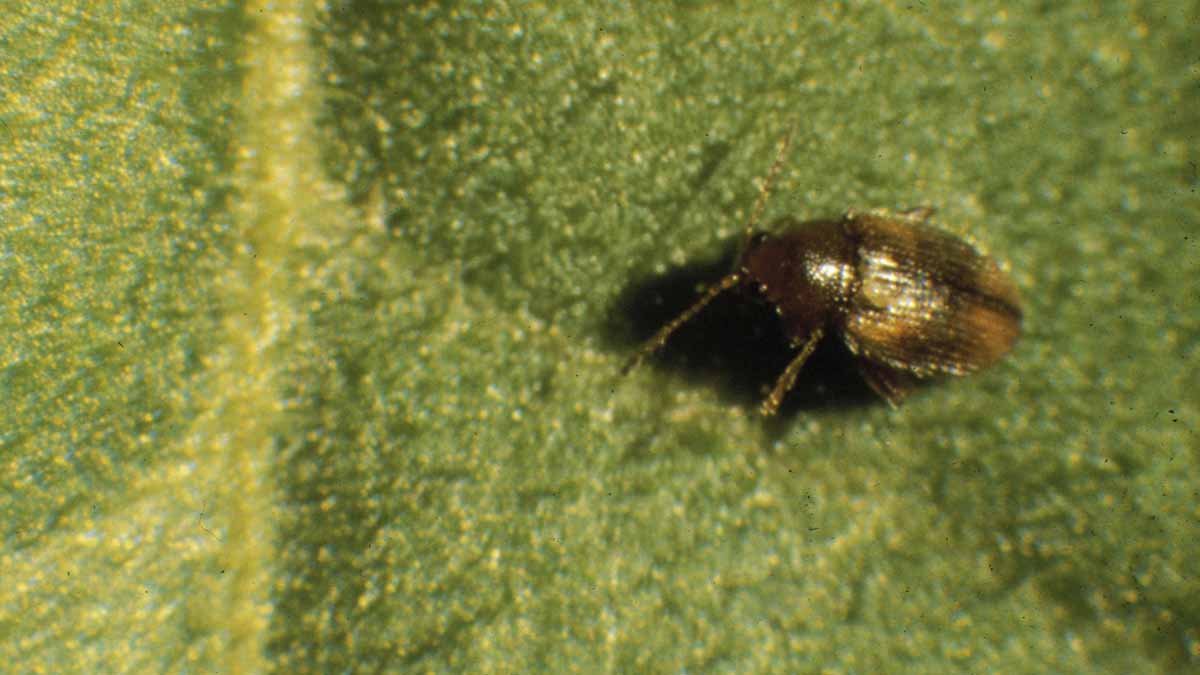
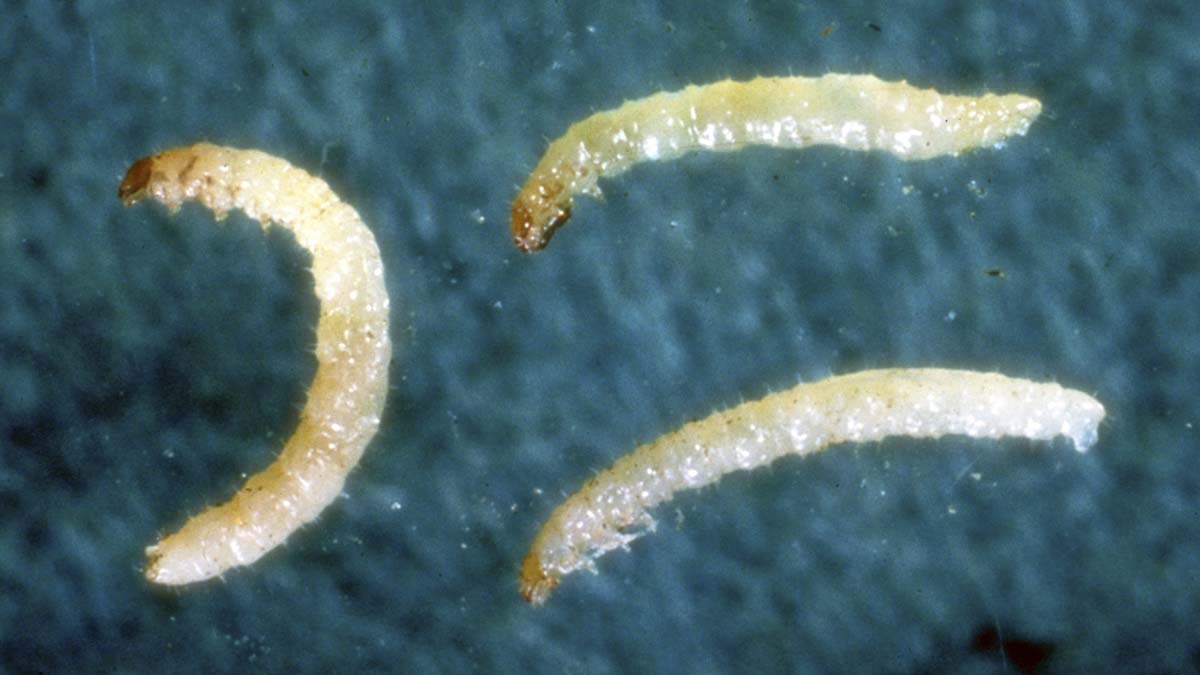
Damage
Flea beetles are generally only minor pests unless there is an outbreak. The feeding of adult flea beetles leaves characteristic small, round or irregular holes or shallow pits in leaves and stems (Figure 4 and Figure 5). These holes are usually less than 1/8 inch (3.2 mm) in diameter. Adult feeding is of primary concern early in the season, when feeding on young shoots can cause stunting or plant death. The presence of adult-inflicted damage can also indicate that there is a risk of damage to tubers from larval feeding later in the season.
Larval feed on below-ground plant tissues, leaving shallow tunnels or grooves in roots or tubers (Figure 5). Tunnels can reach as far as 1/2 inch (1.25 cm) into the tuber, though many common species of flea beetle larvae tunnel no deeper than 1/4 inch (6.35 mm). Often, this damage can be removed by deep peeling during processing, though extensive deep burrowing can leave some lots of potatoes unmarketable. Furthermore, feeding tunnels are often filled with fungal growth and can allow for entry of air or waterborne pathogens.
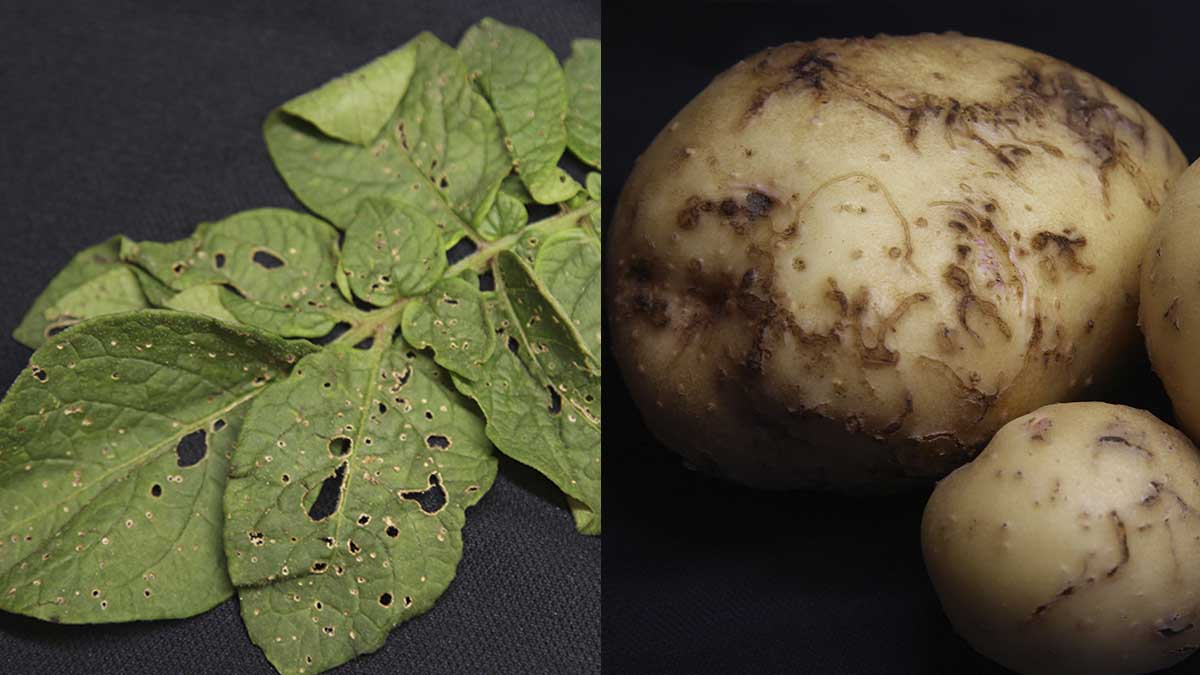
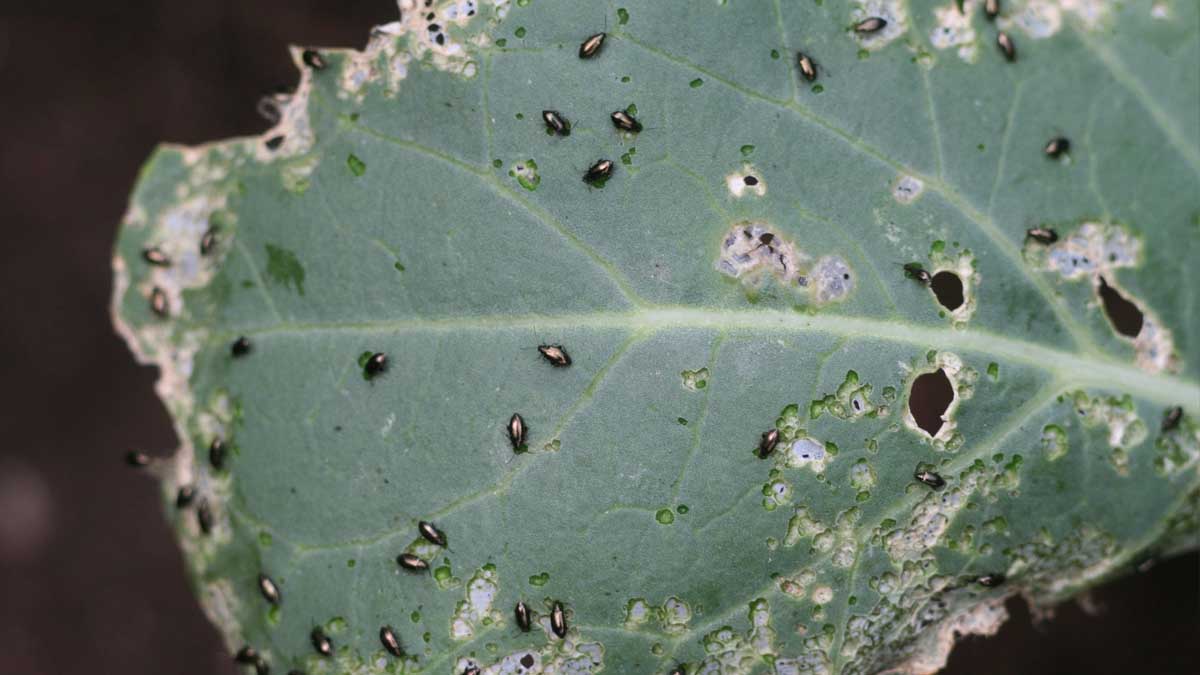
Monitoring
Deploy yellow sticky traps as soon as seedlings emerge, and visually scout for flea beetles and flea beetle damage. Damage often occurs first near field borders where adults may be entering from overwintering sites in cruciferous weeds. Adult emergence usually runs from early April through mid-June. As seedlings are particularly sensitive to flea beetle damage, monitor seedlings closely or consider row covers in garden settings.
Economic thresholds:
- In potatoes, consider taking action if levels of defoliation reach 10-30%, or if 10 or more flea beetle adults are collected per 50 sweeps of a standard 15-inch sweep net.
- In canola, yield losses are thought to occur after 25% of leaf area is damaged, so consider treatment at this threshold.
- In alfalfa, monitor seedlings from the cotyledon to first leaf stages weekly, treating if flea beetle damage is causing significant stand loss (reducing stands to less than 10-20 plants per square foot). Once plants have matured to have several true leaves or more, they can tolerate a few beetles per plant without sustaining economic damage.
- For home gardens, consider taking action if levels of defoliation reach 10-30%, or if one to five flea beetles are found per plant. Brassicas in particular can suffer severe damage in a short span of time, to monitor for flea beetles closely and consider harvesting if severe infestation occurs.
Management
Primary Management Tactics
In most crops and home gardens, flea beetles do not often inflict economic damage. In many commercial crops systemic insecticides applied to manage other pests usually keep flea beetles below economic thresholds.
Physical
- For home gardens, consider row covers during vulnerable seedling stage, removing to allow pollination during flowering
- Consider harvesting brassicas at first sign of flea beetle outbreak
Cultural
- Control weedy hosts around fields and gardens
- Rotate crops out of flea beetles preferred hosts to help disrupt the flea beetle life cycle
- Plant trap crops of nasturtiums or other brassicas
Biological
- Conserve natural enemies by limiting use of broad-spectrum insecticides
- Beauveria bassiana, live spore of a fungus that are available as a spray, may help manage adults
Chemical
- Foliar insecticide treatments can target adults, and should be applied before egg laying occurs
- Soil and seed treatments can control both larvae and adults
- Consider spot treatments in damaged areas, as flea beetle infestations are often localized to field edges
- Recommendations for pesticides to use in the management of flea beetle can be found on the PNW Pest Management Handbooks website
Pesticide Warning
Always read and follow the instructions printed on the pesticide label. The pesticide recommendations in this University of Idaho webpage do not substitute for instructions on the label. Pesticide laws and labels change frequently and may have changed since this publication was written. Some pesticides may have been withdrawn or had certain uses prohibited. Use pesticides with care. Do not use a pesticide unless the specific plant, animal or other application site is specifically listed on the label. Store pesticides in their original containers and keep them out of the reach of children, pets and livestock.
Trade Names — To simplify information, trade names have been used. No endorsement of named products is intended nor is criticism implied of similar products not mentioned.
Groundwater — To protect groundwater, when there is a choice of pesticides, the applicator should use the product least likely to leach.
- Figure 1. Katja Schulz
- Figure 2. R.J. Reynolds Tobacco Company, Bugwood.org
- Figure 3. Agriculture Canada, Ottawa, Bugwood.org
- Figure 4. Erik J. Wenninger, University of Idaho
- Figure 5. Whitney Cranshaw, Colorado State University, Bugwood.org
Desiree Wickwar, Entomologist, IPM Project Manager
2023











